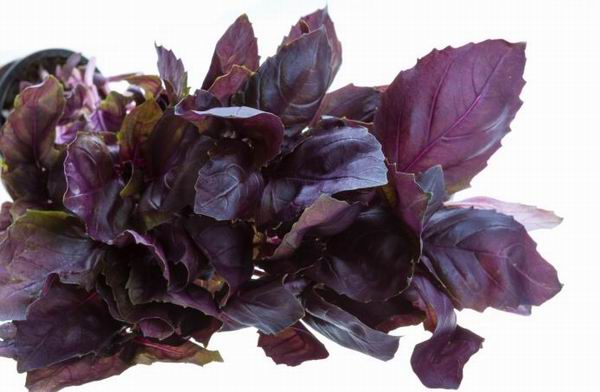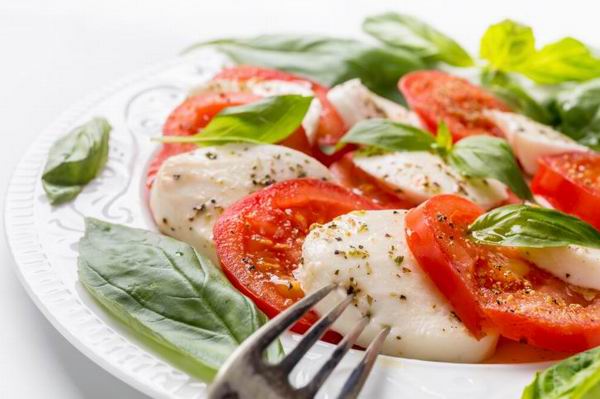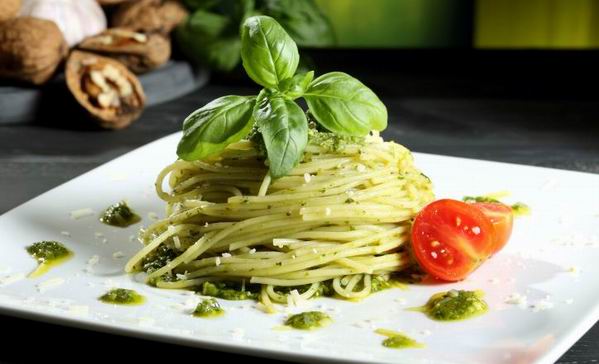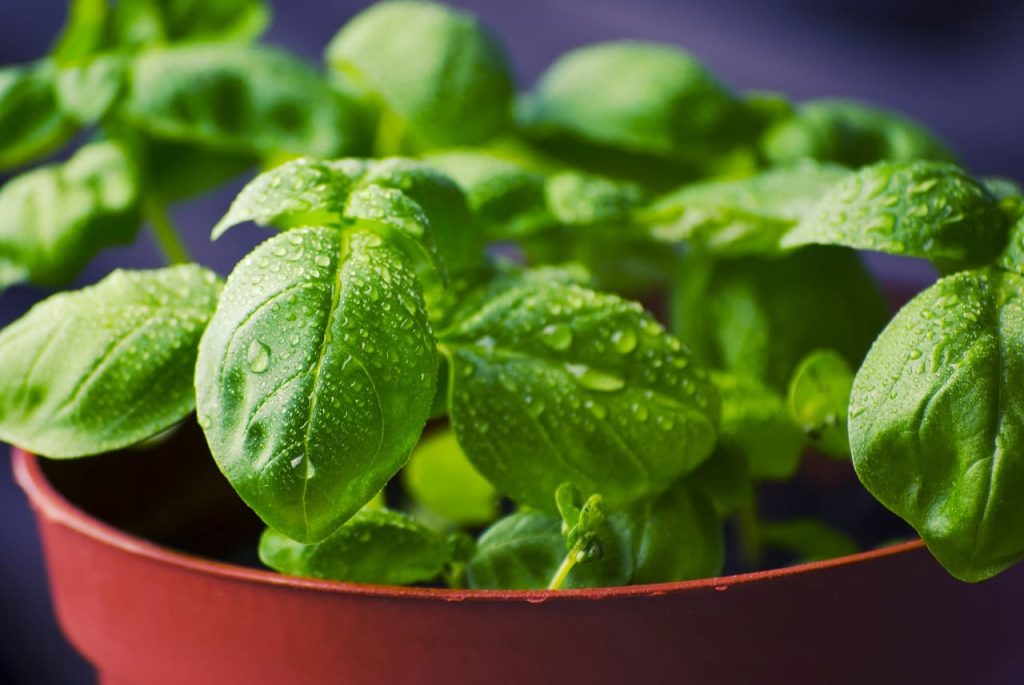The basil is one of the most popular spices, it can be added to salads, hot and cold sauces, the cornerstone of Italian food, but we can even add it into dessert – it is an essential spice of many of our very popular dishes. It can be found dried in all kitchens, but it is also worth keeping it fresh in pots!
Basil, the sacred plant
The name basil can be traced back to the Greek word basil (meaning ‘king’), according to tradition, because it was part of the oil mixture used for the ancient inauguration of the king. It was considered a royal plant throughout Europe. In medieval Latin herb books, it is already listed as a basilicum among medicinal plants. Although not Europe but Southeast Asia, it is likely that the Indian subcontinent may have been its homeland, and as early as BC. known and consumed. It is still considered a sacred plant in many places in India, and presumably, it was no different in ancient Egypt, where remains were found from royal tombs. Its seeds reached Egypt from Egypt and then spread the plant.
Surrounded by legends, basil is not only delicious but also extremely healthy.
There are countless varieties today. It is undeniable that the variety with large leaves, also referred to as sweet basil, is the most popular, but those with narrower leaves and even reds are not uncommon. The leaves of a wide variety of basil leaves differ in shape, size, composition, intensity, and color of the essential oil — there are some types that are the most popular (edible) ornaments for their beauty. It is one of the most legendary plants in the world, and the Far Eastern cuisine still considers its various types grown as sacred basil.
Basil, the healer
It used to be used primarily as an appetite stimulant, to treat bloating, as a cough suppressant, as a natural diuretic, as an antihypertensive. It is also suitable for making tea, which is especially good against catarrhal coughs during the flu and cold period. Incidentally, it was once considered an antidote to depression, as it was said at the time: a miracle cure for grief and tea was sipped for this purpose. The juice squeezed from fresh leaves was used to treat insect bites – externally.
Red basil can be used just like green leaves – its aromas are perhaps even more intense.
It is very rich in essential oil, but also contains vitamins and minerals. It contains a number of B vitamins (including folic acid), a particularly high content of vitamin C (18 mg in 100 g of fresh basil), as well as vitamin K, and even vitamin E. Of the minerals, manganese and iron are significant, but they also contain magnesium, calcium, and even zinc.

Today, it is primarily a herb, and since it can be grown in flower pots, windows, or in a balcony box — a light-requiring plant, needs relatively little care — it’s almost always fresh. Although it is basically one of the determinants of Mediterranean cuisine, especially Italian and Greek cuisine, there are many varieties that are also very popular in Asian cuisine.
Of the latter, perhaps the best known of us is Thai basil, with its ruffled leaf edges and anise scent, which can spice up vegetables, meats, and pasta suddenly roasted in a wok, as well as rich sauces.
As it has a lot of beneficial effects, it can be used in many ways in the kitchen. Like all green leafy plants, basil is best used fresh, although the aromas of dried basil are also present in the food. If possible, choose fresh, so that you retain the most vitamin and mineral content.
Basil in winter and summer
The simplest and most popular basil salad in the world, the Caprese with the mozzarella-tomato-basil combination is a good choice just because the fat-soluble vitamins in basil work perfectly in the body in the company of cheese.

Basil leaves can also be used as a salad ingredient. It is worth sprinkling a large handful of bird salad or other small-leaved green leaf salad, sprinkling with oil-vinegar dressing, and eating it fresh.
Basil is almost essential for any pasta dish made with tomato ragout. One of the best-known basil dishes is perhaps the Naples Margherita pizza, which is not simply emblematic of the wonderful tomatoes, originally made from buffalo milk mozzarella and large-leaf basil, but also because it symbolizes Italian national colors, and the pizza, one of today’s leading dishes, he began his world-conquering career with this type.
With basil, of course, we can season any pizza, be it mushrooms, ham, sausage, or just eggplant, zucchini, peppers.
In the summer, when you find a lot of sun-ripened tomatoes on the market, we can also season the tomato salad with plenty of basil! Regardless of the season, when cooking tomato soup or sauce, don’t miss this aromatic green spice.
There are plenty of varieties of pesto, but those made with real basil are unmatched! The most notable of all is the pesto alla Genovese, originally made in a mortar with basil, pine nuts, and olive oil. It’s also available in a wide variety, but if you have your own basil, you can make it much tastier in minutes than any of the in-store versions. Since pine nuts are a very expensive pastime, it can be replaced with virtually any oily seed: it will also be very delicious with peeled almonds.
Pesto with almonds
Ingredients:
1 large bunch of fresh basil leaves
5-7 dkg peeled almonds slightly roasted
10 dkg hard cheese (eg pecorino, grana padano)
1 chunky garlic cloves
½ dl olive oil
½ lemon juice
1-2 tablespoons of cold water
salt, pepper – to taste

Preparation: Fry the almonds slightly in a pan without fat – so the aromas will be stronger. Allow to cool slightly, then place all the ingredients in a glass of a blender and work into a homogeneous sauce in a few minutes.
This pesto variation contains less oil than usual, will not be very heavy, and thanks to the lemon juice have a particularly refreshing effect.
You can also use walnuts to make pesto – perfect for any freshly cooked pasta
The pesto can be rolled with freshly cooked pasta, used as a sandwich base, but it can also be seasoned with salads, served with freshly fried meats, or stuffed into hard-boiled eggs or tomatoes. You can wait in the refrigerator for up to 1 week.
When using basil, it is basically worth following a golden rule when using it for sauces, meat or pasta dishes, always try to add it to the food at the end of the cooking time so that it has the most aromas and so most of the vitamins remain in it..
Basil can be combined well with other green spaces, including one of the ingredients in the famous French spice bouquet garni. In addition to basil, a small bundle of fragrant spices can contain parsley, thyme, rosemary, fresh bay leaf, and sage. All this in a small bouquet is an excellent flavoring for various soups, sauces, but also for one-course meals and roasts.
We can also make oil seasoned with basil: pour olive oil on the fresh basil leaves and let it rest for a few days so that the aromas penetrate the oil. Like tarragon vinegar, you can make basil vinegar – perfect for salads.
Basil goes well with grilled dishes – great for fish as well.
Last updated: September 24, 2023



Comments are closed.